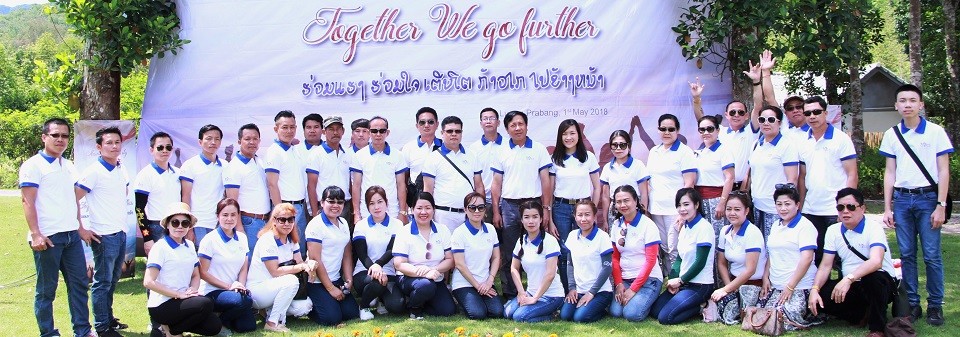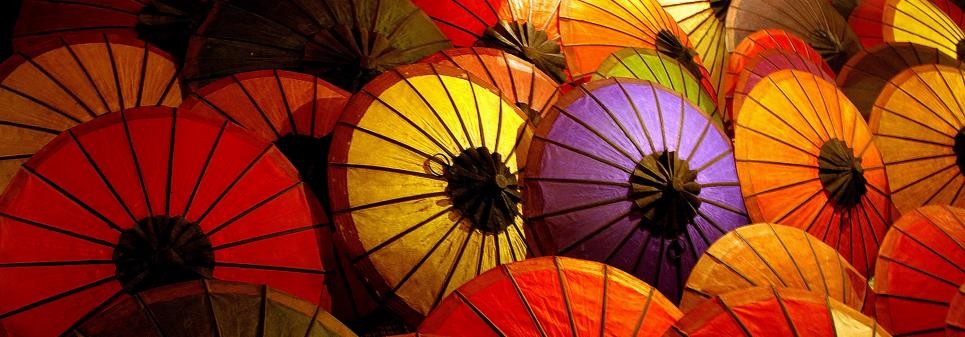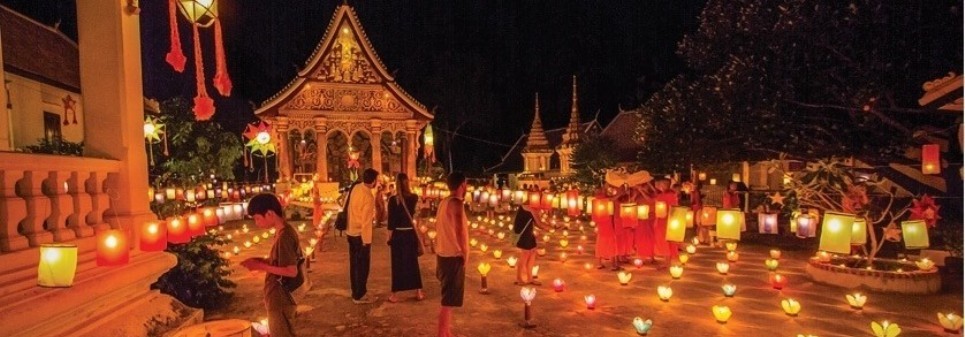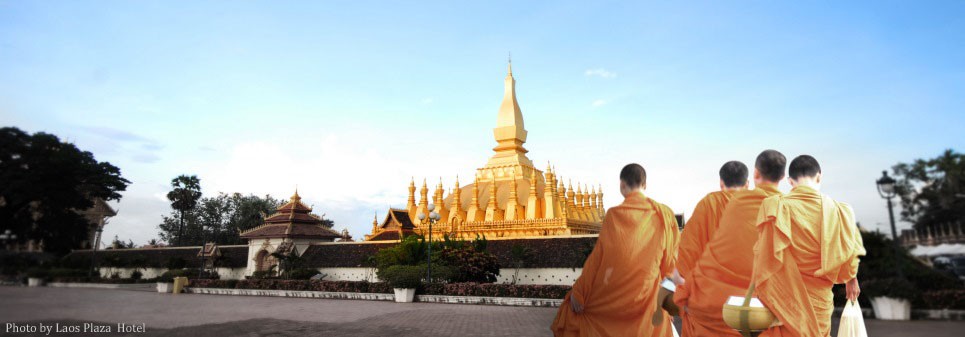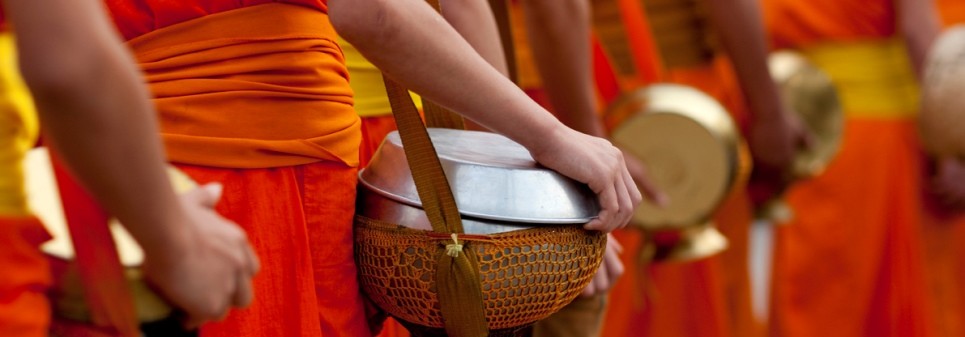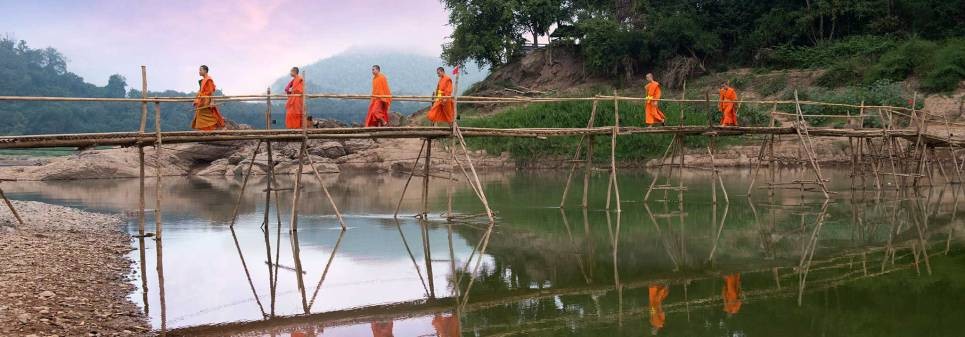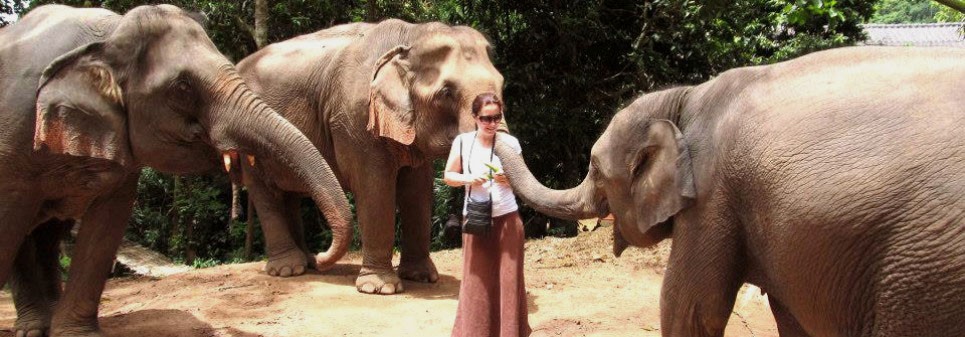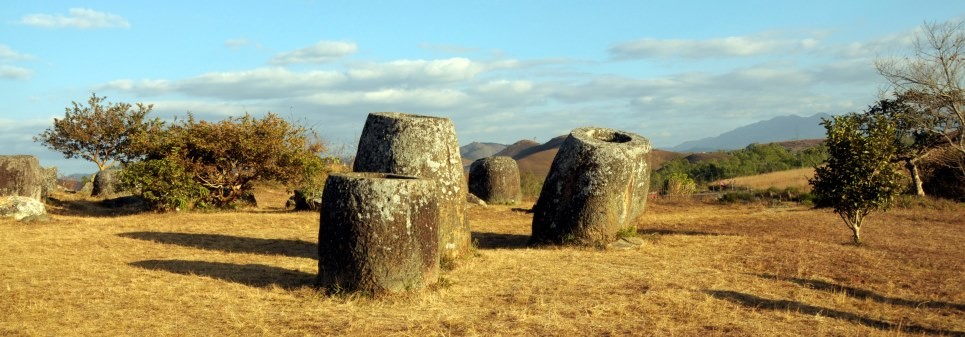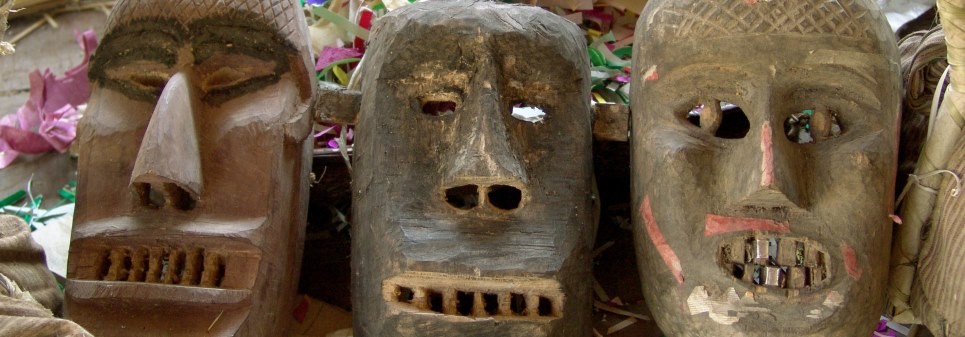Respectful senior monks and newly ordained monks step over silk sashes placed by merit makers for the monks to step on after they walk from a Naga boat, which is where people pour water over them to wash away any bad spirits. This is the central feature of the Kongbouat festival.
Merit makers at this festival including young and old men and women who sit in a long line from a point close to the Naga boat until the grounds of the sanctuary. Some middle-aged men lay on the ground for the monks to step over their backs, believing the monks will cure their backache.
Merit makers take part in the ordination rituals at the temple and a large group of them invite respectful monks and newly ordained monks to step over their silk sashes, but it’s unlikely that most of them know the meaning of this custom.
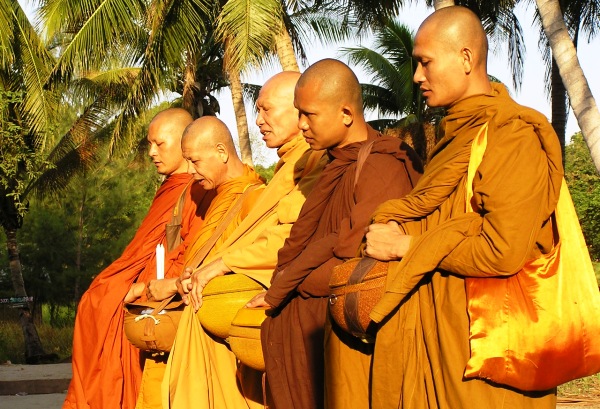 Venerable Keo, a senior monk at Sisavangvong temple in Xayaboury district, Xayaboury province, said merit makers offer sashes to respectful monks and newly ordained monks to step over as a sign of respect and to offer their congratulation to monks who are promoted to a new position and have contributed to Buddhist organisations.
Venerable Keo, a senior monk at Sisavangvong temple in Xayaboury district, Xayaboury province, said merit makers offer sashes to respectful monks and newly ordained monks to step over as a sign of respect and to offer their congratulation to monks who are promoted to a new position and have contributed to Buddhist organisations.
This ritual is in evidence as part of merit making during the Konghote and Kongbouat festivals. When these festivals are observed either in a temple or in someone’s home, the organisers and the monks will decorate a Naga boat while the pathway from the boat to the main worship hall will be adorned with leafy banana stems, sugar cane plants and flowers.
According to Venerable Keo, who is on the temple committee, the Konghote and Kongbouat festivals are held at an appropriate time of the year. This depends on the time that is convenient for those involved, as well as their financial circumstances. There is no limit to the number of festivals that may be held. A large number of people may hold nine Konghote festivals and one Kongbouat jointly. Some people will arrange two or one Konghote and Kongbouat festivals.
Venerable Keo said there are various reasons for holding the Kongbouat festival. Some people do it to ordain a son so that he can study Dharma in the temple and pay tribute to his parents, while others want to pay homage to their deceased parents and other relatives. Elderly people use the occasion as a merit-making ritual as they believe the offerings will support them in the next life. People who arrange a Kongbouat festival are aged over 40. It is considered unacceptable for people under 40 to host the festival because it means they will receive their offerings early and will therefore have a short life.
The festivals last for two days. On the first day the offerings are prepared and on the second day there is an almsgiving ceremony in the early morning and lay people take on the role of Nagas to protect the newly ordained monks. Merit makers and guests form a procession with the four Nagas and offerings and walk to the temple after the almsgiving ceremony.
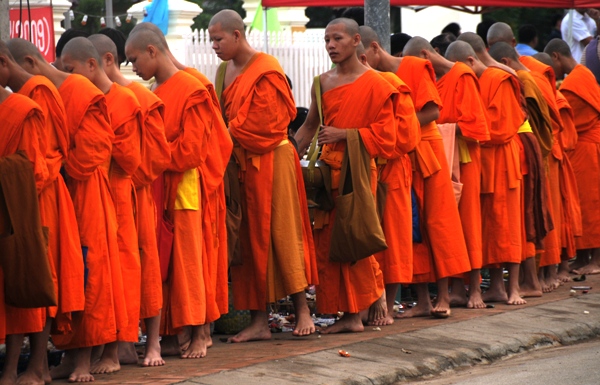 On the first day, friends, relatives and other invited guests come to make merit with the festival organisers and give them money, flowers and milled sticky rice in a bowl. In return, the hosts invite the guests to have lunch and dinner and also give them a bag of snacks. Some guests place offerings in the monks’ bags and bowls. On the evening of the first day, a group of musicians plays traditional music and sings folksongs to entertain the guests.
On the first day, friends, relatives and other invited guests come to make merit with the festival organisers and give them money, flowers and milled sticky rice in a bowl. In return, the hosts invite the guests to have lunch and dinner and also give them a bag of snacks. Some guests place offerings in the monks’ bags and bowls. On the evening of the first day, a group of musicians plays traditional music and sings folksongs to entertain the guests.
The second day of merit-making sees the giving of alms, the conversion of people into four Naga and the procession carrying offerings to the temple. When the procession reaches the temple, respectful monks, elderly people, merit makers and the musicians walk three times around the shrine to pay their respects to Lord Buddha.
As the troupe of musicians plays their instruments and sings, participants cheer them to spur them on and create a joyful atmosphere. The merit-makers carry their offerings, comprising a bed, mattress, robes, household utensils and markbeng (a pyramid made of banana leaves, gold paper, flowers, and silver and golden trees hung with kip notes).
After the merit-makers have processed three times around the shrine, the monks begin the religious rituals in the main worship hall to ordain new monks and novices and present offerings.
After the ceremony, the monks who are to be newly ordained, ordained as senior monks or elevated to a higher rank will have water poured over them inside the Naga boat. The merit-makers do this in order to wash away any bad spirits.
The newly ordained monks carry bags and alms bowls from the Naga boat to the main worship hall. Some monks throw sacred water over the participants while some merit-makers throw money mixed with candy, milled sticky rice and flowers.
Merit-makers then invite monks from other temples and the organisers of the Kongbouat festival to take part in a Baci ceremony for the newly ordained monk. The hosts of the festival offer a bowl containing pieces of silver and golden swords to the monk.
Venerable Keo said these items are considered to be a show of support for the monk. The monk is not allowed to sell them, but may give them to someone he holds dear.
There is no limit to the weight of the silver and golden swords given to the monk. The amount given depends on the festival organiser.
The Konghote and Kongbouat festivals are similar, but the Konghote doesn’t involve the presentation of pieces of silver and golden swords.
Invited guests and all laypeople taking part in the merit-making, both at home and in the temple, will wear modest clothing. Women of course wear a sinh (long skirt) and blouse, while men wear trousers.
Source: By Phon Thikeo , Vientiane Times








